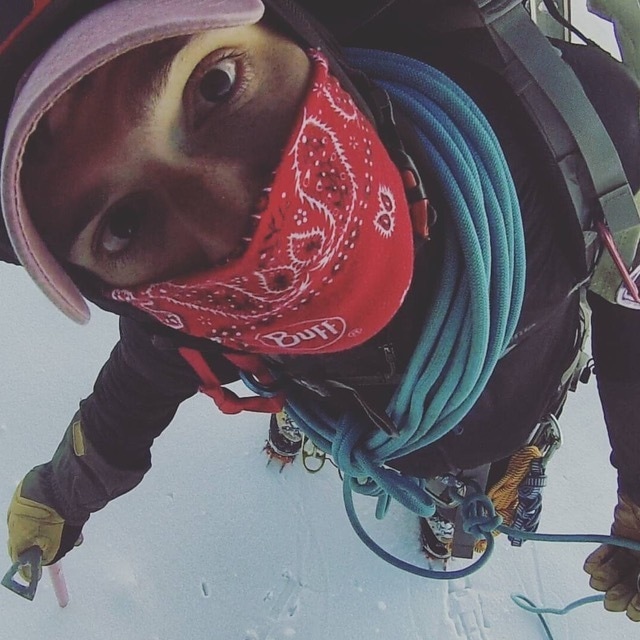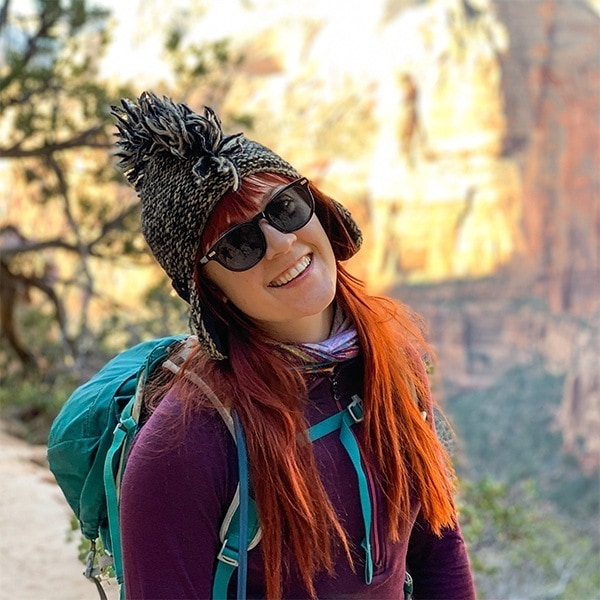Schlepping your home with you on a backpacking trip doesn’t have to mean hauling your monster car camping tent into the wilderness. These days, packable designs and lightweight materials combine to create backcountry shelters that are pain-free to haul and set up—and a downright pleasure to sleep in.
We’ve sent more than 30 REI Co-op Member-testers into the wild over the past two years to assess the best backpacking tents. For months, these intrepid explorers hiked along sandy beaches and remote, rocky creek beds, paying close attention to the pros and cons of each tent design. They reported back to us after numerous rainstorms, stake-down fails and windy evenings, and we’ve crafted their feedback into a no-nonsense guide to the best backpacking tents sold at REI.
From the hardcore solo trekker to the hiker who likes to bring the whole family, every style of backpacker will find a shelter to love in this list.
Test Results
For quick recommendations, check out the results of our round-robin here, or scroll down for in-depth reviews.
- Mountain Hardwear Mineral King 3 Tent with Footprint
- MSR Hubba Hubba LT 3 Tent
- Big Agnes Copper Spur HV UL2
- Marmot Tungsten 4P Tent with Footprint
- REI Co-op Half Dome 2 with Footprint
- MSR Elixir 4 Tent with Footprint
- NEMO Hornet OSMO Ultralight 1P Tent
Editor's note: We updated this gear guide on August 11, 2025, with the latest versions of the MSR Elixir 4 and MSR Hubba Hubba LT3.

Mountain Hardwear Mineral King 3 Tent with Footprint
Score 93
Design type Freestanding
Floor area 42.5 square feet
Vestibule area 20.9 square feet
Peak height 48 inches
Number of doors 2 doors
Packaged weight 7 lbs. 13.7 oz.
Best for Small groups, backpacking with dogs, stargazing
Never leave the dog at home, says our Washington-based tester, even if that means toting a larger shelter. With a three-person tent as light and packable as the Mineral King by Mountain Hardwear, your pup can become a backcountry regular. The tester and his partner regularly bring their 70-pound husky on multiday backpacking trips, and this shelter is plenty spacious for two adult humans and a sprawled-out pup. And at a little over 7 pounds, it’s hardly a chore to carry for many miles. The two-pole design is simple and space efficient and, divided among three people, the tent practically disappears. “I took the poles, [my partner] took the body, and [our other friend] the fly—I had to remind him he had it when we got to camp to set up.”
The testers packed it on a five-day trip along Montana’s The Beaten Path trail without issue. The tent even kept them out of sopping overnight mountain storms. “We stayed comfortable and dry and, considering the generous head space (the tent has a 48-inch peak), we were able to sit up and play cards with another friend until things dried off outside,” one of the testers said. Almost 21 square feet of vestibule area make it even easier to stay comfortable in damp conditions. When the weather improves, users can roll the fly back to the peak, exposing the tent’s top half for primo stargazing. (The fly will continue to cover the back half of the tent to block any breezes and can be quickly replaced if a squall rolls in.) There’s plenty of interior storage, and the doors are large enough to make leaving and entering a cinch. Buy here.
Other capacities: Two-person
Bottom Line: Interior space normally comes at a premium with backpacking tents—not with the Mineral King 3.
Testing Stats:
- Nights out: 12
- Testing states: Colorado, Idaho, Montana, Oregon, Washington
- Best testing story: While backpacking in Colorado’s San Juan Mountains, one tester and a couple friends spent an afternoon hiking up Wetterhorn Peak before hiking back out. But when a surprise afternoon storm rolled in, they only had time to pull out the fly and huddle beneath it. “Extremely comfortable? No. Dry? Mostly.”
MSR Hubba Hubba LT 3 Tent
Score 86
Design type Freestanding
Floor area 47 square feet
Vestibule area 8 + 8 square feet
Peak height 42 inches
Number of doors 2 doors
Packaged weight 4 lbs. 13 oz.
Best for Backpacking with kids, small groups, sustainability features
Got little ones who like to sprawl? The MSR Hubba Hubba LT 3 was a favorite with our testers who camp with toddlers, sporting an ample floor area of 47 square feet. That’s 90 inches of length and 75 inches of width for three campers (and maybe a cute pup) to comfortably lounge and listen to morning birdsong.
“For a 3-person tent, this is an extremely portable sleeping system that is ideal for backpacking, where weight and size are critical,” said a Washington tester who took the tent to the Cascade Range. Weighing in at 4 pounds, 13 ounces, the Hubba Hubba LT 3 is a lightweight, freestanding backpacking setup that packs down into a petite 20-inch by 6.5-inch package when not in use.
Also important: MSR has gone the extra mile to make this tent easier on the environment. It comes equipped with a PFAS-free durable water repellent (DWR) coating to keep out precipitation, and its solution-dyed fabric cuts carbon emissions by roughly 80% when compared with previous models of the same design. These changes don’t seem to have affected performance: One New York tester took the Hubba Hubba LT 3 beach camping on New York's Fire Island and said that the tent held up well when subjected to sustained wind and rain.
With all that weatherproofing, you can rest assured that your key gear, like packs, water bottles and boots, are safe within the spacious 8-foot vestibules—leaving more room in the sleeping area for late-night card games. Smaller accessories, like hats, lip balm and electronics, store easily in interior mesh pockets located along the shelter's top, toe box and ceiling. Note that the Hubba Hubba LT 3 does not come with a footprint but does pair with the brand’s Universal Footprint 3. Buy here.
Bottom Line: With its roomy rectangular floor plan and ultralight design, the MSR Hubba Hubba LT 3 provides the perfect amount of space and weatherproofing to shield small groups and growing families.
Testing Stats:
- Nights out: 2
- Testing locations: Washington, New York
- Best testing story: One tester approved the Hubba Hubba LT 3 for camping trips with two adults and one toddler who “loves to sprawl out during the night.” It also worked as an outdoor “playpen” for their kiddo, so that the toddler could get some quality alone time away from pesky bugs and UV rays.
Big Agnes Copper Spur HV UL2 Tent
Score 95
Design type Freestanding
Floor area 29 square feet
Vestibule area 9 + 9 square feet
Peak height 40 inches
Number of doors 2 doors
Packaged weight 3 pounds
Best for Just about any backpacker, sharing with humans and dogs
Bigger tents come in bigger packages—a real bummer if you're planning on shouldering your shelter for a backcountry adventure. So rub your eyes and look again: The Big Agnes Copper Spur HV UL lineup is spacious and light across the board, an impressive balance that earned it an REI Editors' Choice Award. The two-person variety tips the scales at just over 3 pounds, while the three- and four-person versions shave even more weight at 3 pounds 14 ounces and 5 pounds 11 ounces, respectively (or less than a pound and a half per person if you split up components).
For a barely there tent like this, you might expect confined quarters or a lack of features, but the Copper Spur makes for a remarkably comfortable backcountry hangout. It has a whopping 14 (ish) feet of floor space per sleeper in all capacities—plenty of room to spread out after a day of hiking. Our testers appreciated the tent's high-volume architecture, crediting its steep walls and tall peak height. Another nice touch? Dual vestibules (with the exception of the one-person version) that are positioned on either side for easier entry and exit. And an additional zipper allows you to prop up the fly over trekking poles to create a veranda.
Even durability isn't a trade-off. Our testers returned from a month in Washington's Cascades with nary a snag on the Copper Spur, even after camping in alpine zones with barnaclelike rocks. And the line's bikepacking-friendly version (in one-, two- and three-person capacities) features shorter poles, perfect for stashing in handlebar rolls, as well as a couple of other bike-specific features. Buy here.
Other capacities: One-person, three-person, four-person
Now in stock: We're currently testing this tent’s updated version. Buy the new Big Agnes Copper Spur UL2 Tent here.
Bottom Line: You won't sacrifice comfort in this surprisingly lightweight tent—the roomy, feature-packed Big Agnes Copper Spur HV UL is as much a joy to sleep in as it is to carry.
Testing Stats:
- Nights out: 52
- Testing states: California, Colorado, New York, Utah, Washington
- Best testing story: "There are few places I've ever felt so far from the rest of humanity," one tester says of his trip down a random slot canyon along the Escalante River in Utah. "Since it was a moonless night, we pulled the fly off the Copper Spur and got a serious star show."
Marmot Tungsten 4P Tent with Footprint
Score 88
Design Type Freestanding
Floor area 58.3 sq. ft.
Vestibule area 15 + 15 sq. ft.
Peak height 52 in.
Number of doors 2
Packaged weight 8 lbs. 7 oz.
Best for Large groups, wet weather
Four's a party. But in the ultra-spacious Tungsten from Marmot, a crowd of stinky backpackers hardly posed a problem. During a winter trip out to the Utah desert, the tent's generous 93- by 82-inch floor handled a quartet of puffier shoulder season sleeping bags (and their four occupants) with ease. One gray morning, more than 4 feet of peak height and vertical interior walls left enough room for everyone to sip coffee without jostling. Two giant doors make getting in and out smoother and the vestibules offer ample space for gear storage, keeping your belongings out of the sleeping area.
The Tungsten held condensation to a minimum—a rarity for high-capacity tents like this—thanks to big vents on top of the fly. Two lampshade pockets in the eaves held a light for some after-dark poker, too. Weight and packability are always a ding with tents this large and the Tungsten is no exception. At almost 9 pounds, this is a load you'll want to share with your trailmates. Buy here.
Other capacities: two-person, three-person
Bottom Line: When you’re bringing a crew and need elbow room, the spacious Tungsten is hard to beat.
Testing Stats:
- Nights out: 3
- Testing states: Utah
- Best testing story: Setting up the Tungsten is a breeze, even when the pressure is on. "When we got to camp, the wind was really starting to blow," our tester says. "The whole tent is just two cross poles and two brow poles—It felt like we had it up and staked down in 30 seconds."
REI Co-op Half Dome 2 Tent with Footprint
Score 88
Design type Freestanding
Floor area 31.8 sq. ft.
Vestibule area 9.17 + 9.17 sq. ft.
Peak height 40 in.
Number of doors 2 doors
Packaged weight 5 lbs. 15.1 oz.
Best for Beginners, budget, camping with kids
A brand-new pair of performance backpacking boots cost more than this tent—not bad for backcountry digs. On a trip to the Wind River Range, our testers lauded the REI Co-op Half Dome 2 for its ample space and plethora of pockets, all without realizing it was the most budget-friendly shelter in our test. This roominess, combined with an intuitive setup (even in strong winds, one tester noted), makes the Half Dome a win for backcountry beginners who want a tent that's both affordable and uncomplicated. (One Portland-based tester managed to set the tent up in the dark in just 5 minutes.) Another win for those who don’t want a fussy tent: It performed impressively in turbulent weather without any special adjustments. One New Mexico-based tester intentionally took it out to windy spots. “On the last night, I intentionally faced it crossways to the westerly wind and its sturdiness was impressive,” he reports. “I should note that I did not feel compelled to use the extra tie-downs. Just the standard stake-outs.”
The trade-off for the value and durability is weight (it's nearly 6 pounds), though our testers still deemed it big-mile-ready, especially when divided between packs. If you're new to the trail, chances are you're probably sharing it with a friend who can help shoulder some of the lift. And livability is top-notch. A generous, rectangular floor plan and steep sidewalls left enough room for a mom and her little one on a three-night outing, and for two adult hikers and a small dog to wait out a squall in general comfort. Buy here.
Other capacities: Half Dome 3 Tent
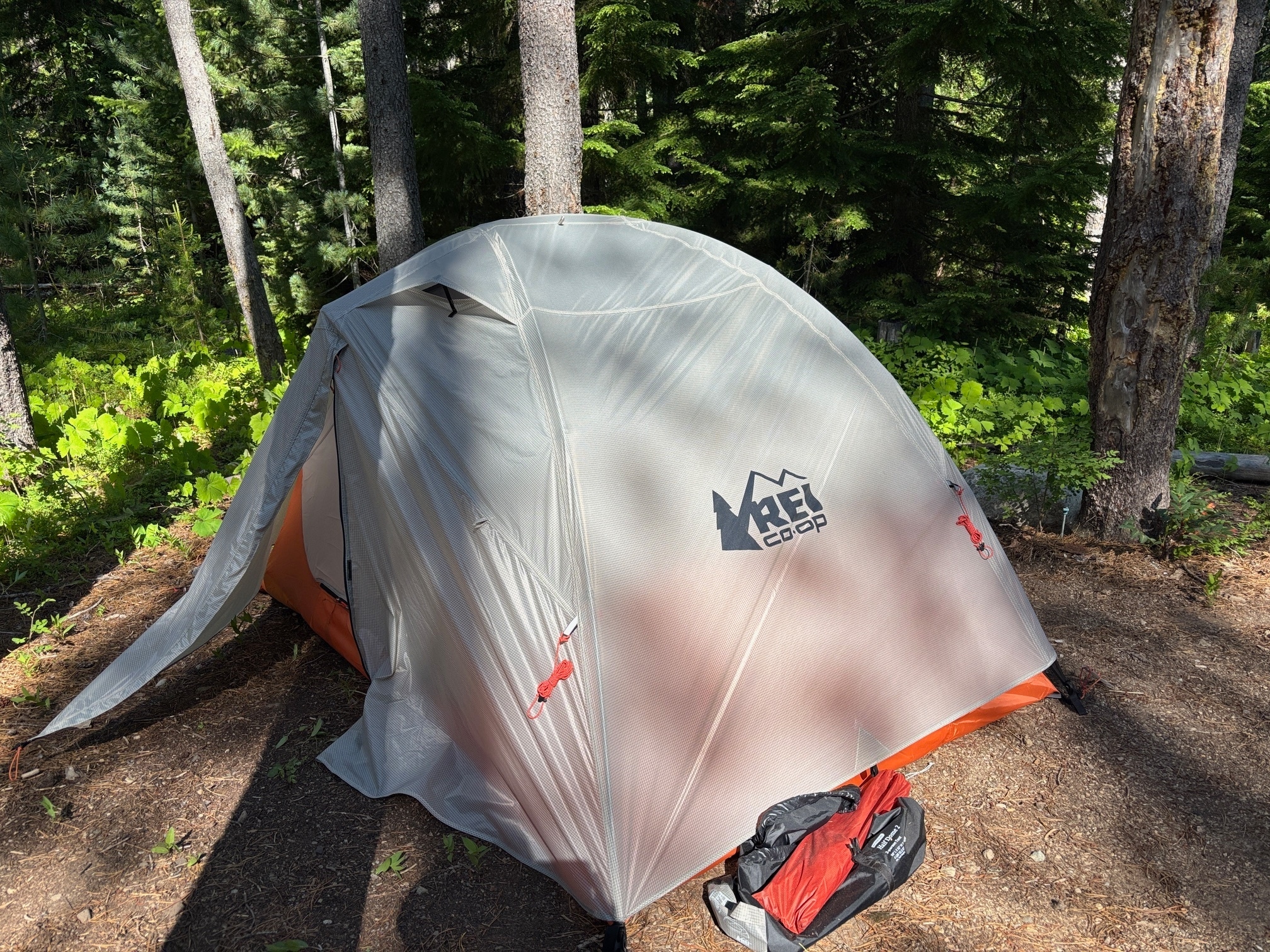
Bottom Line: You’re not sacrificing much with this feature-rich, budget-friendly backpacking tent.
Testing Stats:
- Nights out: 24
- Testing states: New Mexico, Wyoming, Utah, New York, Montana
- Best testing story: One tester hiked the "infamous" GR20 in Corsica, one of the most difficult trails in Europe ("It was really, really hard," he confirms). At the Matalza hut, he camped near a large group from California, all using REI Half Dome 2 tents. "The campground looked like an REI showroom."
MSR Elixir 4 Tent with Footprint
Score 84
Design type Freestanding
Floor area 55 square feet
Vestibule area 16 square feet
Peak height 48 inches
Number of doors 2 doors
Packaged weight 9 lbs. 4 oz.
Best for Large groups, families
If you’re looking for a tent that toes the line perfectly between a weatherproof car camping palace and a light-enough backpacking shelter, look no further than the MSR Elixir 4. Testers loved this do-it-all tent for its super-sturdy design and roomy interior, with one Colorado tester saying that she could easily fit three people and loads of gear inside.
The Elixir 4’s minimum trail weight of 8 pounds, 3 ounces (with just the tent, rainfly and poles) hits that elusive sweet spot wherein it’s great for both off-grid vehicle camping and backcountry trekking. “It could be split up very nicely by three to four people and not take up much room at all [inside packs],” said one tester after a two-night backpacking excursion in Colorado’s Lost Creek Wilderness. Given the tent’s generous 88-inch width and 90-inch length, we’re confident that it would work nicely as a super-plush 2-person campground or festival shelter, too. Plus, the Elixir 4’s corner pockets and mesh upper gear pouch mean that up to four campers can easily stash their nighttime accessories and headlamps without tussling for space.
Multiple testers noted how weatherproof the Elixir 4 proved in the field. Our Moab, Utah, camper gave it special marks for excelling in a windstorm with 39 mph gusts, doing a great job keeping the wind out and blocking the harsh desert sun. A Washington tester praised it for its water resistance, too, but noted that one tradeoff of that thicker, more weatherproof rainfly material was that condensation gathered inside the tent more easily on humid trips.
The one place this tent didn’t excel? Setup. Our Colorado tester mentioned that the Elixir 4’s 7000-series aluminum poles might be tricky to bend into position if you plan on setting the tent up solo. Ultimately, this wasn’t a dealbreaker: “For a 4-[person] tent, it’s unlikely that you would be using it alone, anyways,” she said.
With the tent’s total weight being 9 pounds, 4 ounces (including stakes and footprint), we certainly wouldn’t consider this to be a count-your-grams ultralight shelter, but for a sturdy and roomy 4-person tent, it’s light enough for families or beginner backpackers to take out without blowing the bank on a more delicate (and thus pricier) model. Buy here.
Bottom Line: The MSR Elixir 4 is a roomy backcountry setup that can stand up to gnarly wind gusts and chilly nights. It’s light enough to take on an overnight trek but boasts the headroom and floor space of a comfy car camping tent.
Testing Stats:
- Nights out: 13
- Testing locations: Colorado, Utah, Washington, Minnesota
- Best testing story: “When coming back to camp after day hiking, this tent was still standing after taking on high wind gusts, while the fully staked-down, enclosed shelter containing our kitchen and food storage area was fully upside down, blowing in the wind and only hanging on by one remaining stake.”
NEMO Hornet OSMO Ultralight 1P Tent
Score 93
Design type Semifreestanding
Floor area 20.6 square feet
Vestibule area 7.3 square feet
Peak height 39 inches
Number of doors 1 door
Packaged weight 2 lbs. 4 oz.
Best for Solo backpackers, ultralight
When you don’t have the option of splitting a tent among a handful of inhabitants’ backpacks, you notice every ounce. But prioritizing weight savings can come at the expense of space and comfort. The Hornet by NEMO was both light and roomy option for solo trekkers.
During a three-night backpacking trip in Silverton, Colorado, and in Utah’s Bears Ears National Monument, one tester appreciated the tent’s light weight (at 2 pounds and 4 ounces) and packability. “This thing compresses pretty small,” he said, “especially compared to other tents I’ve used made of DCF.” DCF (Dyneema® Composite Fabric) is used by a lot of premium ultralight brands for hyperefficient weight savings. “I’d definitely consider it on an ultra-endurance thru-hike, especially if I wanted something I knew could handle bad weather and high winds.” One 6-foot, 8-inch tester fit snugly but comfortably and still had room for toiletries, some food and a stash of clothes inside the tent; the rest of his pack lived in the vestibule.
The Hornet is semifreestanding, meaning that a portion of the tent needs to be staked out in order for it to reach its full size. The Hornet has two corners on the foot-side that should be staked out—simple to do and not 100% necessary in good weather. Plenty of guyouts and attachments from the fly to the tent body help pull out the body to allow a little more shoulder room. A Nightlight Pocket™ makes it easy to organize in the dark, and the large door and vestibule make entrances and exits less of a chore than other 1-person tents. Buy here.
Other capacities: Two-person and three-person
Bottom Line: Have your cake and eat it, too, with the spacious and weight-conscious single-person NEMO Hornet OSMO.
Testing Stats:
- Nights out: 9
- Testing states: Colorado, Utah
- Best testing story: This isn’t meant to be a 4-season tent, but when a surprise storm rolled in on our tester while camping in Silverton, Colorado, he was even more impressed: “The night brought 20 to 30 mph winds and about 6 to 8 inches of freshly fallen, wet snow.” He woke up perfectly dry.
Sea to Summit Telos TR2 Tent
Score 93
Design type Freestanding
Floor area 28 sq. ft.
Vestibule area 19.5 sq. ft.
Peak height 43.5 in.
Number of doors 2
Packaged weight 3 lbs. 10.7 oz.
Best for Small groups, tall campers, variable weather
Clearly, the designers at Sea to Summit are aliens who have never seen a tent before, tasked to make a lightweight backpacking shelter from scratch… and the out-of-the-box design they came up with is genius. During a winter of desert backpacking trips, our tester fell hard for the Telos' myriad innovations. The first stroke of brilliance comes from the upside-down looking brow pole across the top, which pulls the top corners of mesh way up and out. The result: You and your partner can both sit up and get dressed without your heads or shoulders brushing the tent material (plus, you get taller, easier-to-enter doors). A full-width vent along the very top of the tent kept things breezy during a warmer-than-usual spring trip to Moab, Utah. And three stuff sacks (for the body, fly and poles) separate easily to split up the load (and double as a light bar or storage), then reconnect for stashing. And on top of all that, the body of the tent easily clips to the poles even when the fly is already on: Our testers could set up the fly first in a rainstorm to keep the body dry, roll the fly back halfway on clear nights and set the fly up as a sun shelter big enough for three camp chairs. So, why is this shelter an Honorable Mention? While this tent is a similarly solid pic for small backpacking groups, the Mineral King (Best for Small Groups) won in the category thanks to providing slightly more space for campers. The Telos TR2 is a tighter squeeze. Buy here.
REI Co-op Arete ASL 2 Tent
Score 86
Design type Freestanding
Floor area 32.9 sq. ft.
Vestibule area 8.7 sq. ft. each
Peak height 43 in.
Number of doors 1
Packaged weight 6 lbs. 5 oz.
Best for Cold-weather camping, windy conditions
Thinking of pushing your tent into winter use? The REI Co-op Arete ASL 2 is a three-season tent that can pinch-hit in four seasons. When one pair of testers took it into Washington's remote Picket Range, 30 mph winds hardly ruffled their roomy mountain chalet, thanks to a beefy pole structure (two cross poles and two brow poles create a sturdy dome) and guyout points at every intersection. Nice touch: The stake-out points can accommodate skis, ice axes or ski poles, if you're camping in snow. The same sturdy architecture led a pair of co-op editors to declare the Arete "earthquake-ready" after a magnitude 4.6 shaker barely stirred our sleepers. ("That was an eventful camping trip," one said after the fact.) Inside the Arete, adjustable vents keep condensation to a minimum, and a large window on the top of the tent body keeps airflow churning (and becomes a giant skylight in good weather). Buy here.
Buying Advice
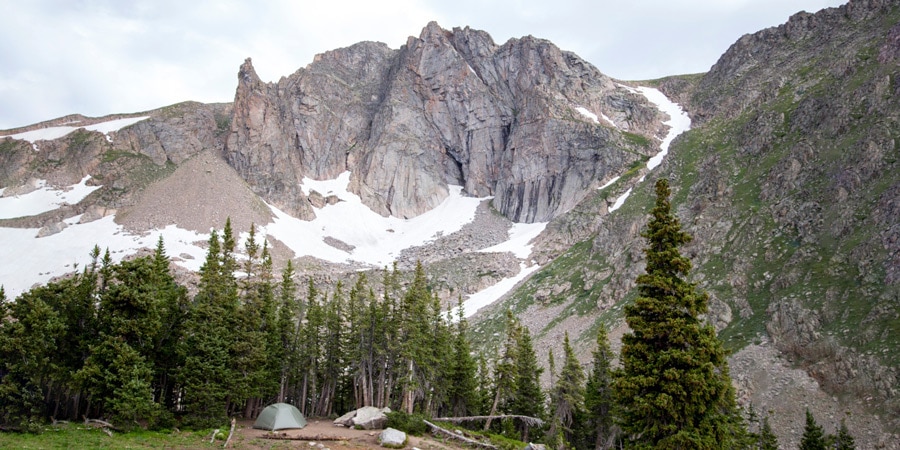
Unlike with car-camping tents, weight matters when you're planning to shoulder your tent in your pack. Finding the right backpacking tent is an exercise in juggling how much capacity, livability, seasonality, weight and size, and additional features matter to you because even one of those things adds ounces to the equation. (Just remember this old thru-hiking adage: Ounces make pounds, and pounds make pain.)
Capacity
How many people will be sharing the sleeping space? The number in the name of the tent is the brand's honest assessment of how many sleepers can fit shoulder to shoulder. Keep in mind that backpacking tents are cozier than their car-camping counterparts, so you can expect snug quarters if you max out the capacity.
Capacity of each tent in this guide:
- 4-person: Marmot Tungsten 4P, MSR Elixir 4
- 3-person: Mountain Hardwear Mineral King 3, MSR Hubba Hubba LT 3
- 2-person: Big Agnes Copper Spur HV UL2, REI Co-op Half Dome 2, REI Co-op Arete ASL 2, Sea to Summit Telos TR2
- 1-person: NEMO Hornet OSMO 1P
That said, many models come in multiple capacities, which we've listed at the end of each review. Pick a capacity that will work for the number of backpackers you typically plan to have in your tent. If you crave extra space and are willing to carry a heavier tent, you can also go larger (say, buying a 3-person shelter for two sleepers).
Livability
Tents can come with all kinds of features that will make it more enjoyable to spend time inside them, and one of the most important is roominess (or lack thereof). Pay attention to the specified floor space and peak height to get an idea of how comfortable the tent will feel. Specs alone won't tell you if a tent feels livable, though; it's important to know what the tent looks like pitched. More vertical walls that don't angle in steeply will usually weigh more but feel less claustrophobic when sitting up. And while it won't actually add square footage to your space, a bright fly color will transmit more light inside the tent, making the interior feel spacious.
If you're moving fast or only planning to sleep in your tent, tight quarters may not matter. If weather is going to sideline you inside your tent or you're planning on using it to basecamp, perhaps more livability will serve you best.
Tent Seasonality
Most backpacking tents are classified as 3-season (designed for spring, summer and fall) or 4-season (also designed for winter). Most users only need a 3-season tent; 4-season tents, while more durable and more livable, tend to be heavier than 3-season shelters. That can make them worth it for alpine and winter adventures but overkill for summer trips. Every tent in this lineup is a 3-season tent, with the exception of the REI Co-op Arete ASL 2, which is something like a 3.5-season tent: great for occasional snowy weather, not expeditions.
Weight and Size
You'll often see several specs related to weight and size in a tent's description, all of which will tell you just how much brands mean it when they say they're "ultralight" (a term they can use pretty liberally).
Key tent specs:
- Minimum trail weight: This is the best spec to use when comparing your options. It's the weight of the bare essentials: the tent body, rainfly and poles.
- Packaged weight: This is the weight of everything that comes with the tent when you buy it: body, rainfly, poles, stakes, stuff sack, pole sack, instructions and more. Obviously, you won't be bringing all of this on the trail, so the actual weight you'll pack will likely be somewhere between this number and the minimum trail weight.
- Packed size: This is the amount of space the tent takes up in a pack, which you can reduce by splitting up components with a partner.
Reducing weight and packed size will usually result in trade-offs with space, livability and durability, though you can also pay a premium for ultralight-yet-strong materials. Consider whether you could do without features like a second door or vestibules big enough to hang out in. One feature that is worth a few extra ounces: ventilation like mesh windows and adjustable rainfly vents to prevent condensation buildup.
Ease of Setup
Tents offer a range of features to help make the pitching process easier and faster:
Freestanding design: Most tents are freestanding, which means that they can stand without the use of stakes, making them easier to set up and lift to move to a new spot. Non-freestanding tents may be lighter because the pole structure doesn't have to be as robust. The six freestanding tents in this guide are the Big Agnes Copper Spur HV UL2, Mountain Hardwear Mineral King 3, Marmot Tungsten 4P, REI Co-op Half Dome 2, Sea to Summit Telos TR2 and REI Co-op Arete ASL 2. The only semifreestanding tent is the NEMO Hornet OSMO Ultralight 1P.
Pole hubs: These junction points for side and roof poles help take the guesswork out of assembly, and they create a more spacious interior by allowing tent walls to be more vertical. Most tents on this list, including the Mountain Hardwear Mineral King 3, Marmot Tungsten 4P, REI Co-op Half Dome 2 and Sea to Summit Telos TR2, have pole hubs.
Pole clips: Do you slip poles through sleeves, connect them to tent canopies with clips, or both? Sleeves provide more fabric tension and a stronger pitch, but slipping poles through them during setup can be tricky. Clips attach to poles easily and allow more airflow underneath the rainfly, which is good for reducing condensation. All tents on this list include pole clips.
Color coding: Many tents will color match, say, pole tips with tent corners so you know at a glance how to orient your setup—an especially handy trick if your tent is wider or taller at one end. The REI Co-op Arete ASL 2, Big Agnes Copper Spur HV UL2, Marmot Tungsten 4P, REI Co-op Half Dome 2, Sea to Summit Telos TR2 and NEMO Hornet OSMO Ultralight 1P have some form of color coding to match pole tips with attachment points.
Note that, even if your tent has a lot of features that make setup easier, you should still do a practice run at home before setting up a tent in the wilderness. It's a lot harder to get the hang of it if your first pitch is in the dark or in a rainstorm (or both). At home is also a better time to discover if any pieces are missing.
Durability
Tents designed to be ultralight, bordering on minimalistic, trade off some degree of durability in the materials. One fabric spec you occasionally see is denier (D), which is the weight in grams of a 9,000-meter length of the yarns that make up that fabric (you can typically find this number listed online under the tent’s specs). A higher denier number signals a more rugged fabric, while lower denier numbers are found in more lightweight but less durable fabrics. However, it won't be an apples-to-apples comparison unless you're comparing identical fabrics.
Weather Resistance
Features like a robust pole architecture, bathtub-style floor, ceiling vents and windows, and guyout points are great if you plan to camp in wet, windy or exposed areas. Rounded dome designs eliminate flat roof spaces where snow and rain can collect. And, partly because they're often built with those specific features, 4-season tents will almost always be stronger than 3-season tents. If you're only planning on backpacking in milder climes, picking a tent with large mesh window, door or ceiling panels will provide great stargazing when sleeping without the fly.
Should You Get a Footprint?
Available for many tents, a footprint is a custom-cut ground cloth accessory that's specifically designed to match the tent's floor shape. Using a footprint helps protect the floor from abrasion and makes packing up cleaner. Some campers choose to bring a generic ground cloth or tarp, but because those will generally extend beyond the perimeter of the tent floor, they can collect rainwater.
Some tents also offer an ultralight setup option where the (separately sold) footprint, poles and rainfly can be pitched together without the main tent, which is a great option if you're camping in temperate climates and going minimalist with weight.
Methodology
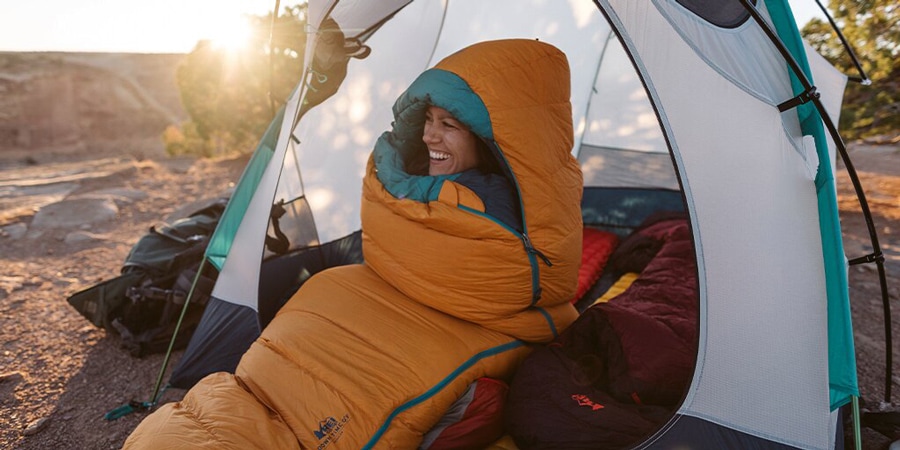
Throughout 2025, we’ve sent dedicated backpackers—including REI Members from across the country—out into the backcountry to evaluate the best shelters you can find at REI Co-op. Our testers packed these shelters in alpine zones and slot canyons. They weathered afternoon storms, windy evenings and even unexpected snowfall. Our gear testers rated each shelter on its spaciousness, weight, weather resistance, durability, structure, ease of setup and packed size. We averaged those scores to give each tent a combined score out of 100. The tents on this list scored highest in those categories.
All said and done, the Big Agnes Copper Spur HV UL2, Mountain Hardwear Mineral King 3, NEMO Hornet OSMO 1P, and Marmot Tungsten scored high in all categories. We tested the 2-, 3- and 4-person versions of the Copper Spur. The Sea to Summit Telos TR2, REI Co-op Half Dome 2, REI Co-op Arete ASL 2, MSR Hubba Hubba LT3 and MSR Elixir 4 scored high in most categories, carving out respectable niches for specific users.
There will be additional tents added to this guide as we continue to test on a rolling basis. Once feedback is in, we will update.
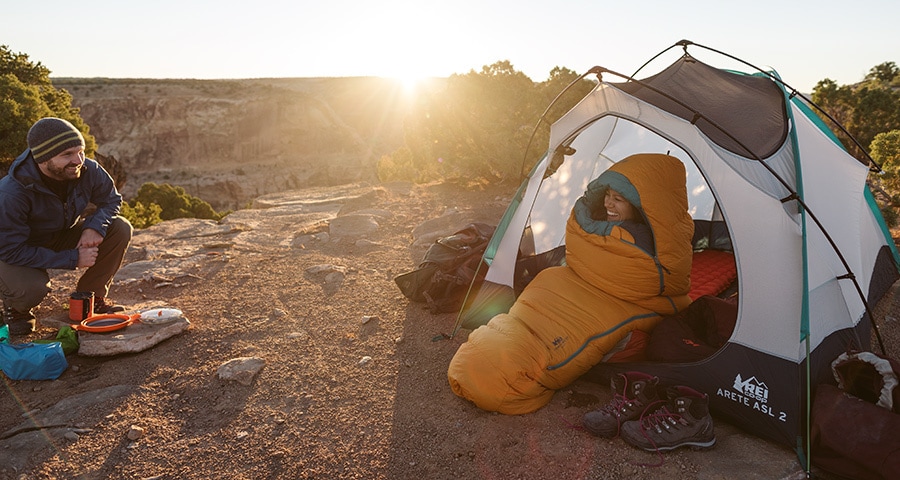




![Copper Spur HV UL2 Tent [Trekking poles not included]](/media/115b9af3-33ee-48bf-82f7-f1a54f53f155/?size=440)
![Copper Spur HV UL2 Tent [Trekking poles not included]](/media/6341cfd5-14e1-48a7-8e8f-b25925ba6ec5/?size=440)

![Copper Spur HV UL2 Tent [Trekking poles not included]](/media/4981e50a-2a56-4698-924a-91480283d87b/?size=440)





![Tungsten 4P Tent with Footprint [Headlamps not included]](/media/11949ef1-0f92-49ff-b04b-6ed73a863fc9/?size=440)
![Half Dome 2 Tent with Footprint [3/4 front view with rainfly]](/media/0670e3cf-74ef-4434-8141-39564f0d4217/?size=440)

![Half Dome 2 Tent with Footprint [Front view]](/media/d08c10ff-1175-451b-bbb5-4dbaf4d7b1a5/?size=440)





![Hornet OSMO Ultralight 1P Tent [3/4 front view with rainfly (Birch Bud/Goodnight Gray)]](/media/b1fad062-b41a-497d-be67-2648fbbc0e24/?size=440)

![Hornet OSMO Ultralight 1P Tent [Front view (Birch Bud/Goodnight Gray)]](/media/24e53875-d06c-41ac-8434-faa6090d6e33/?size=440)







![Arete ASL 2 Tent [3/4 front view with rainfly (Kabocha Orange)]](/media/5fbc6bb8-3b02-42f2-a5f9-7540e1b320dd/?size=440)

![Arete ASL 2 Tent [Front view (Kabocha Orange)]](/media/58a48094-8a69-4c5b-bc06-49ae19a69c18/?size=440)
![Arete ASL 2 Tent [Pole structure (Kabocha Orange)]](/media/6d679142-9f57-48f0-8d12-528996c062ab/?size=440)
![Arete ASL 2 Tent [Pole clips (Kabocha Orange)]](/media/44852659-51ca-4e56-8001-2c407b4d5da0/?size=440)
